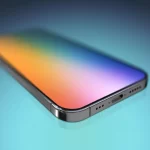In today’s visually-driven world, food photography has become a compelling and vibrant niche within the broader realm of photography. From Instagram feeds to culinary blogs, food photographers are captivating audiences with mouthwatering images that transform meals into visual works of art. In this comprehensive guide, we will delve into the art and science of food photography, exploring techniques, equipment, styling tips, and the rise of this captivating genre in the digital age.
The Visual Feast of Food Photography
Food photography is more than just a visual documentation of meals; it’s a form of storytelling that engages the senses. Here’s why food photography has become so popular:
- Visual Appeal: Well-executed food photos make viewers hungry, evoke emotions, and create connections.
- Culinary Adventure: Food photography allows photographers to explore and share diverse cuisines and culinary cultures.
- Creativity Unleashed: From composition to lighting, food photographers exercise creative control over every aspect of their images.
- Digital Sharing: The rise of social media platforms and food blogs has made it easier than ever to share food photography with a global audience.
Techniques for Captivating Food Photography
1. Lighting
Lighting is crucial in food photography. Natural light, diffused through curtains or bounced with reflectors, often yields the best results. Consider the angle of light to create depth and highlights.
2. Composition
Compose your shot with care. Utilize the rule of thirds, leading lines, and negative space to guide the viewer’s eye. Experiment with different angles, such as overhead, 45-degree, or eye level.
3. Styling
Food styling is an art in itself. Pay attention to the arrangement of elements, colors, and textures in the frame. Use props like utensils, napkins, or fresh herbs to enhance the visual story.
4. Camera Settings
Experiment with aperture settings to control depth of field. A wide aperture (low f-number) can create a pleasing background blur. Adjust ISO and shutter speed to achieve proper exposure.
5. Editing
Post-processing can enhance your food photos. Use software like Adobe Lightroom or Photoshop to adjust brightness, contrast, color balance, and sharpness.
Equipment for Food Photography
You don’t need an extensive setup to capture stunning food photos. Here’s a list of essential equipment:
| Equipment | Purpose |
|---|---|
| Camera | A DSLR or mirrorless camera with manual settings. |
| Lenses | A prime lens (e.g., 50mm) for sharpness and versatility. |
| Tripod | Keeps your camera steady for long exposures. |
| Reflector | Bounces light to reduce shadows and add highlights. |
| Diffuser | Softens harsh light for even illumination. |
| Props and Backdrops | Plates, utensils, and surfaces for styling. |
Food Photography Tips and Tricks
Here are some additional tips to elevate your food photography game:
- Tell a Story: Create a narrative with your photos. Showcase the cooking process, ingredients, or the dining experience.
- Use Fresh Ingredients: Vibrant and fresh ingredients make for more appealing subjects.
- Mind the Details: Pay attention to small details like droplets of water on fruits or steam rising from a hot dish.
- Experiment with Angles: Try different angles to find the most flattering perspective for your subject.
- Practice Patience: Food photography can be time-consuming. Don’t rush; take the time to compose your shots thoughtfully.
Food Photography in the Digital Age
The rise of social media and food blogging has fueled the popularity of food photography. Instagram, in particular, has become a platform where food photographers can showcase their work to a massive audience. Influencers and bloggers often collaborate with restaurants and brands, leveraging their food photography skills to create engaging content.
Real-Life Success Stories
- Tasty: BuzzFeed’s Tasty brand has garnered millions of followers on Instagram and Facebook by creating captivating food videos and photos. Their visually appealing content has reshaped the way we consume recipes online.
- David Loftus: Renowned food photographer David Loftus has worked with celebrity chefs like Jamie Oliver and published several cookbooks. His exquisite food photography has elevated the presentation of countless dishes.
- Local Food Bloggers: In cities around the world, local food bloggers use food photography to highlight hidden culinary gems, contributing to the success of small businesses.
Conclusion
Food photography is not just about taking pictures of meals; it’s about capturing the essence, culture, and artistry of food. With the right techniques, equipment, and creativity, you can transform your culinary creations into visual masterpieces that engage and inspire. Whether you’re a professional photographer or an amateur enthusiast, the world of food photography offers endless opportunities for artistic expression and storytelling. So, grab your camera, experiment with lighting and composition, and embark on a delectable journey through the lens of food photography.













